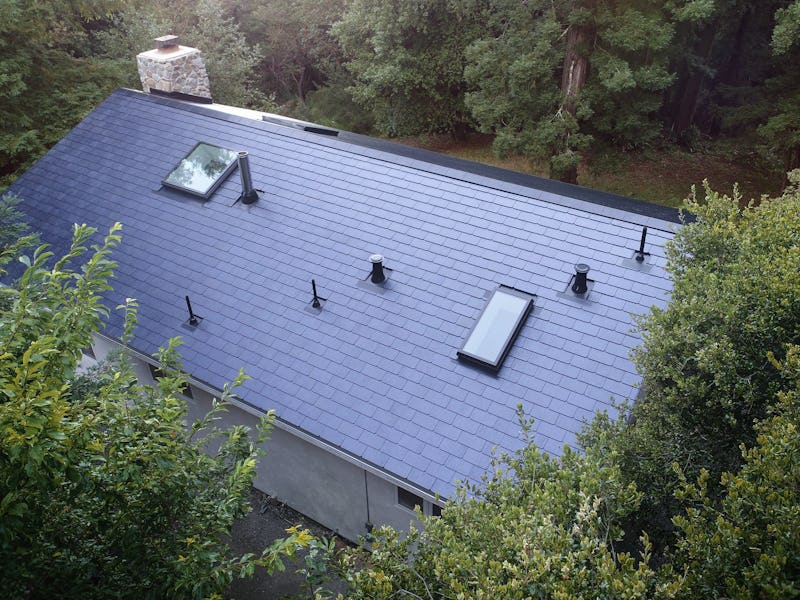Elon Musk Reveals Why 2018 Will Be the Year of Tesla's Solar Roof
Tesla is shuffling off to Buffalo.

Tesla executives revealed during Wednesday’s earnings call that the company plans to increase solar roof production in a big way next year.
The solar roofs represent Tesla’s big push to redefine home solar panels by blending them seamlessly with the regular shingles. While prospective buyers can place orders for the roofs, it wasn’t until this most recent earnings call that company founder Elon Musk offered a concrete timeframe of 2018 for when production would sufficiently increase for customer installations to begin in earnest.
Crucial to this plan is getting up and running the company’s second Gigafactory in Buffalo, New York. In a letter to shareholders, Tesla executives said solar roof installations will slowly increase over the final quarter of 2017 as the company moves its production process from the Tesla factory in Fremont, California, to Gigafactory 2 in Buffalo.
“As we fine tune and standardize the production and installation process, we expect to ramp Solar Roof production considerably in 2018,” Tesla stated in its letter to shareholders.
Tesla CEO Elon Musk suggested another reason it won’t be until 2018 that solar roof production really gets going: The company needs time to ensure the roofs will work for the multiple decades homeowners count on them to.
Artist's conception of a home with a solar roof.
“A roof is expected to last a long time, at least 25, 30 years,” said Musk. “And so there’s a certain rate at which we can do accelerated lab testing on all these components and maybe try to accelerate lab testing on a 30-year roof in sort of six months. But it’s hard to do it in less than about six months, and then we’ve got to pack that into the production process.”
For now, the solar roof represents only a tiny fraction of the company’s overall work on energy storage and renewables. Tesla revealed it deployed 110 megawatt hours’ worth of energy storage products in the third quarter of 2017, the majority of which were the company’s Powerwall batteries.
In contrast, Tesla still has a ways to go when it comes to putting actual roofs on top of actual houses and buildings. Jonathan McNeill, Tesla’s president of global sales and service, intimated during the call that about 10 roofs have been installed in addition to the ones on his and Musk’s homes.
The earnings call update is part of a bigger shift in Tesla’s approach to solar power. The shareholder letter stated Tesla is deliberately moving away from industrial and commercial solar energy products that offer relatively little profit.
“We do expect the solar demand to rebound as we move solar sales into all of our stores,” said Musk. “And that’s just sort of conventional solar. The solar roof stuff, we expect is going to be – we’re confident it’s going to have extremely high demand.”
Buffalo’s Gigafactory 2 has a long and winding history, beginning life as the planned factory for the solar startup Silevo. The Musk-backed company SolarCity bought Silevo in 2014, and last year SolarCity merged with Tesla. With this acquisition came a serious expansion in the scale of the factory, though Tesla has reportedly struggled to get Gigafactory 2 ready for production.
The company began production of solar cells in July of this year. The new 2018 timeframe represents the company’s most concrete promise for when Gigafactory 2 should be fully up and running — and, with it, Tesla’s much-anticipated solar roof installations.
Is the Tesla roof worth the cost? Check out this video to find out.